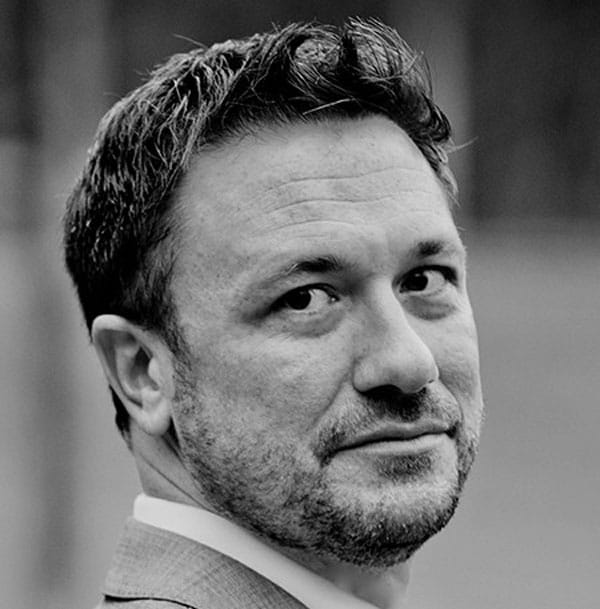
Landscape architect Stephen Schrader works on large-scale public projects with the help of Vectorworks Landmark design software.
Stephen Schrader is a CLARB-certified landscape architect who was born and raised in the South and remains deeply connected to the region. At Birmingham, Alabama-based Holcombe Norton Partners,Inc., Schrader and his team have developed large-scale public projects, including new buildings on several college campuses that have achieved LEED certification and won several awards. Schrader joined gb&d for a discussion of the benefits and difficulties in sustainable landscape planning and design in the South and how changes in technology have facilitated greener solutions.
gb&d: You’re a southern resident through and through; is there a special connection to the land that can be found in your projects?
Stephen Schrader: Absolutely. While I think it would be interesting to do projects in other parts of the world, there are many benefits to having intimate knowledge of the plant and hardscape materials that are durable and work well with the context of the places where we work. I do have a good connection to this part of the world and don’t have any desire to move out of the South—unless it is to the South of France, maybe [laughs].
gb&d: Are there any unique opportunities or difficulties you’ve experienced working in the South?
Schrader: [Alabama’s] environmental regulations are probably the most lax in the US, which is both difficult and an opportunity. If there isn’t a regulatory framework, it can be hard to convince a developer to avoid flattening a space from property line to property line. The day will come when regulations change and we will have to adapt. The good news is that most municipalities are starting to update their stormwater standards, and a lot of the civil engineers that we work closely with are used to working in jurisdictions that have much more stringent regulations.
gb&d: Do you ever find yourself advocating for sustainable solutions when the client hasn’t specifically requested it?
Schrader: [Laughs] I’m sure, I’m trying to cut down fewer trees and move less dirt to get a building pad prepared all the time. The truth is, you can get something with a whole lot more character, and it’s in your and your clients’ best interest, if you work with the land. And as it gets more expensive to move dirt around, it becomes easier to convince developers.
We always advocate for more efficient solutions, which are typically greener one way or another, whether it’s because we burn less fuel by moving less dirt, cut down fewer trees, or disturb fewer habitats. But in the South it isn’t that difficult to convince anyone that open, green spaces are more enjoyable, and we always need more trees for shade!
gb&d: You’ve been at Holcombe Norton Partners for over 10 years, how have changes in CAD technology affected your practice?
Schrader: I’m sort of at the perfect age where, when I was in school, using computers to draw, or especially to fix a drawing, was nearly forbidden. In my first job I would do our layouts in CAD for precision (since nothing in New Orleans is square or level), but then I would switch over and draw all the details by hand.
With the advent of the rating systems like LEED and the Sustainable Sites Initiative, CAD has gotten much more useful because with a couple of clicks I can quantify my open space, design planting areas, and create a water budget, and then work back to that baseline to see if I’m meeting criteria in order to get credits. Our whole office uses Vectorworks Landmark design software, and I can’t imagine trying to do those calculation-oriented tasks without it.
gb&d: Are you able to use the charts and tables you described in client presentations to help push them toward more sustainable approaches?
Schrader: Yes, definitely. For all kinds of local codes and landscape ordinances, once I’ve got the requirements balanced out I’ll put the worksheets right on the design drawing, making it really easy for anyone reviewing to ensure I’ve met the letter of the law, so they can see I’ve done all the background work..
gb&d: Are there other ways Vectorworks Landmark software helps you organize and design?
Schrader: Certainly, with LEED projects I’ve got my plant database set up with water requirements for all the plants that we use. Once I’ve got a landscape area and its microclimate conditions set up, it will tell me what effect plant species and densities will have on water usage.
I’ve also got a pretty fancy worksheet that I’ve put together that is basically the same as the LEED template, so it is easy to gather all of that information. It will also run the baseline calculation to see if I’m making the 50% water reduction. And when I change my design, I can click “recalculate” and see if I’ve made it better or worse.
gb&d: What changes in the industry have you seen? Any predictions for the future of landscape design?
Schrader: Today, even if a client isn’t pursuing LEED certification or other credits, when they approach a landscape architect there is an expectation that they will receive a sustainable solution. There has also been more interest in utilizing native plants in projects. Regarding the future, the only thing I can say is that land is one resource we aren’t making any more of and it seems like all of the “easy” jobs are already done. So projects in the future will be more about optimizing existing space for greater sustainability and enjoyment.

